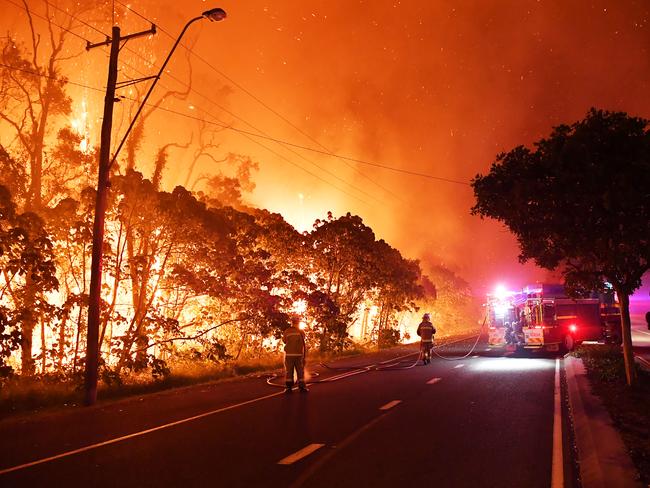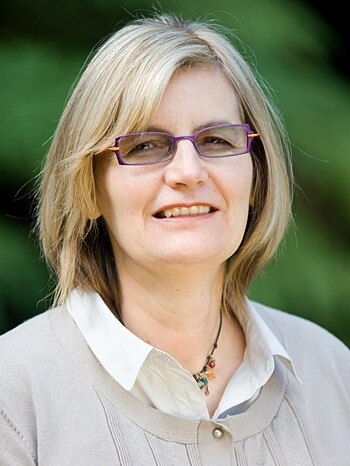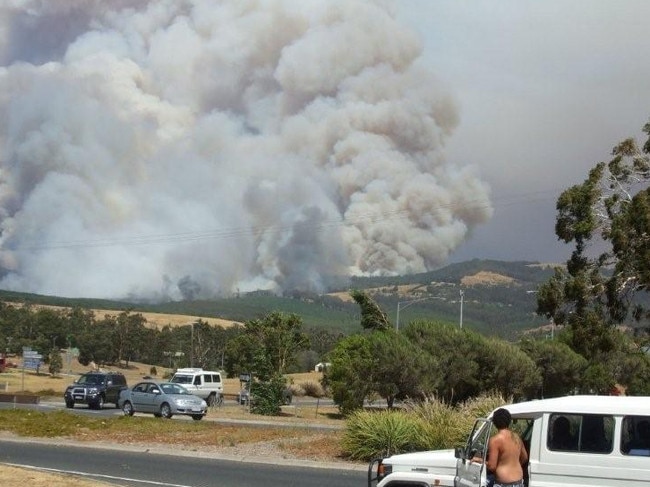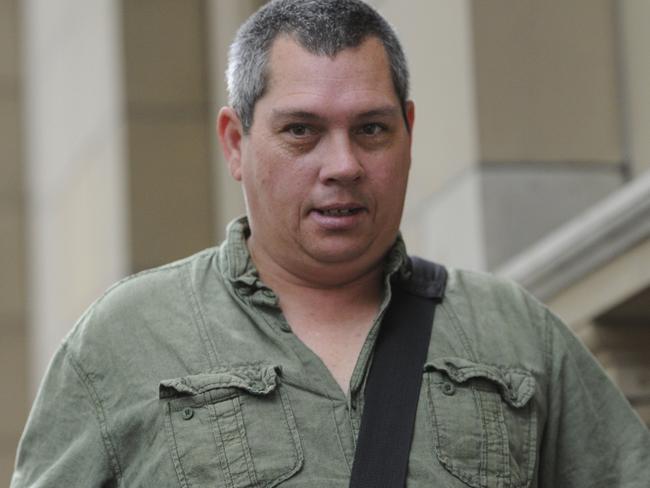As crews battle blazes in NSW and Queensland, there are concerns some were deliberately lit
Suggestions that some of the ferocious bushfires in Queensland and NSW were deliberately lit has raised concern about firebugs. What drives these people, and how can they be stopped?
True Crime
Don't miss out on the headlines from True Crime. Followed categories will be added to My News.
The horror start to the bushfire season in Australia has come with the disturbing confirmation that some of the most destructive blazes have been deliberately lit.
With 70 fires currently burning in Queensland, the state’s police commissioner Katarina Carroll told reporters today that some “Some fires have just clearly gotten away from kids thinking they are having fun,” while other blazes were the product of “reckless and purposeful behaviour from others.”
Queensland detectives revealed this morning they are speaking with a number of teenagers in relation to a bushfire that has so far destroyed 12 homes on the Sunshine Coast, while investigations continue into other suspicious outbreaks.

According to Dr Paul Read, Co Director of the National Centre for Research in Bushfire and Arson, the fact that young people have been implicated in the current outbreaks is “pretty typical” as 50 per cent of arsonists are aged between eight and 21.
He said there tended to be four subtypes of young people involved in lighting fires: the kids experimenting with fire play; those on the autism spectrum; those who had been victims of child abuse and neglect; and a smaller cohort who knowingly engaged in malicious conduct.
Of those four groups, the first three should be treated with therapy and education, and only the malicious conduct group should be dealt with by the juvenile justice system, Dr Read said.
“We need to report suspicious activity for further investigation, but parents, teachers and scout masters need to be safe in the knowledge that kids (they report) will not be demonised,” he said.
“Sometimes there is a community backlash, often led by politicians saying we should hang, draw and quarter (fire starters), but that actually prevents caregivers from referring kids to treatment.
“We need a more nuanced approach.”


A 2004 report by the Australian Institute of Criminology found that “a large proportion of children play with fire to some extent and most fires started by children are accidents resulting from fireplay or experimentation”.
It’s a small group of young people who engage in problematic firesetting, the AIC found.
Interestingly, child and adult firestarters tend to do so when they’re alone, whereas adolescent firestarters tend to do so when they are in pairs or groups.
Associate Professor Janet Stanley, a Principal Research Fellow with the Melbourne Sustainable Society Institute, has been working in the field for 10 years. She said there was “almost no research” on the topic, and it was an “appalling situation”.
Suburban sprawl was pushing families to the very edge of cities, where young people were often at the boundary of bush or wilderness areas, she said.
“On the fringes of cities the young people have less opportunities in life. There’s no transport to get to recreation, social problems are bigger. There are no jobs. They’re also pretty angry, left out of our society.
“We’re setting up a ripe situation for kids to light fires. It’s a recipe for disaster,” she said.
Although fire brigades conduct fire education with schoolchildren, there was more that schools could be doing to pick up on problematic fire behaviour, she added.

“Often schoolteachers know who they are,” Assoc Prof Stanley said, citing the not-uncommon phenomenon of a school bin being set alight as an early indicator of potentially problematic behaviour.
“Teachers need support to be able to refer these kids to specialised services to address these problems early,” she said.
Of course, kids are not the only ones who start fires: older men have also been idenitifed as a significant cohort.
“They’re loners, and depressed,” Dr Read said. “As they get older they’re more embittered, and frequently there’s alcohol and poly drug use.”
He said the “true pyromaniac” was in fact quite rare, but most older male fire starters were “versatile criminals” who might also or otherwise have committed drug or violence offences.
“They’re very much loners; they suffer depression but also personality disorders that make them quite odd, anti-social and awkward,” he said.
Such a profile seems to fit the descriptions given to Brendan Sokuluk, the former landscaper and Country Fire Authority brigade volunteer who was sentenced to 18 years in jail for the deliberate lighting of the 2009 Black Saturday bushfire in Victoria’s Churchill, which burnt 36,000 hectares of land, destroyed 156 homes and killed 10 people.

That fire occurred on a day of extreme fire warning across the state, and Dr Read said this was not an uncommon behaviour for the “older male” fire start cohort.
“They tend to light closer to population areas, and they wait for the hot days,” he said.
Dr Stanley said the “media publicity” around bushfires was also a contributing factor to the problem, as it created a sense of excitement in vulnerable people and could reinforce hero narratives around the actions of firefighters. (Disturbingly, Sokuluk rang Triple 0 to report the Churchill bushfire, and assisted a neighbour with protecting their property.)
Dr Stanley said the issue was a bit like the media’s reporting of suicide, in terms of encouraging copycats, but she added that reporting of bushfires also helped save people’s lives.
She called for the cause of all fires to be investigated, which may go some way to revealing whether the crime of arson is increasing.

RELATED:
How fireys battle blazes without water
Grim outlook for Australia’s bushfire season
First look inside Peregian bushfire zone
Full list of Queensland bushfire warnings
Out of control blaze threatens Yamba on NSW north coast
Dr Read said it looked as though there had been a “vast increase” in the crime, but mainly because the statistics on bushfire arson had only been recorded since it became a specific crime in the early 2000s.
He cited an Arson Prevention Program in Victoria’s Gippsland region as having success in bringing down rates of the crime, because it brought police and fire services together with a community education component.
Assoc Prof Stanley said that as our population was increasing, it stood to reason that there was an increase in the number of people who deliberately light fires.
But climatic conditions including extended dry periods, high winds and soaring temperatures were frequently making bushfires more destructive, she added.
“Climate change is exacerbating this whole problem and it’s only going to get to worse,” she said.


